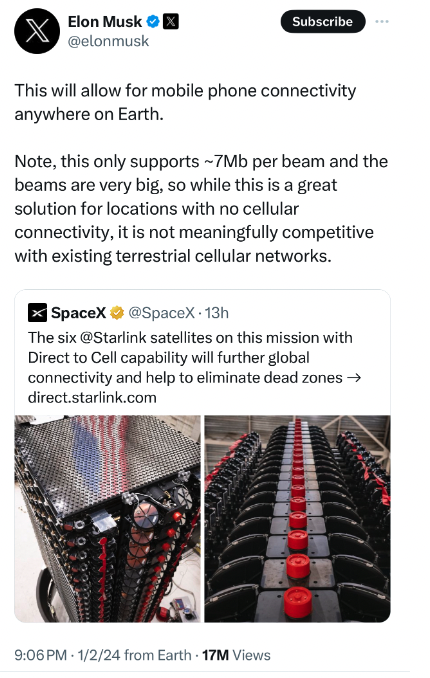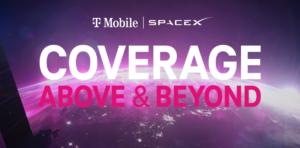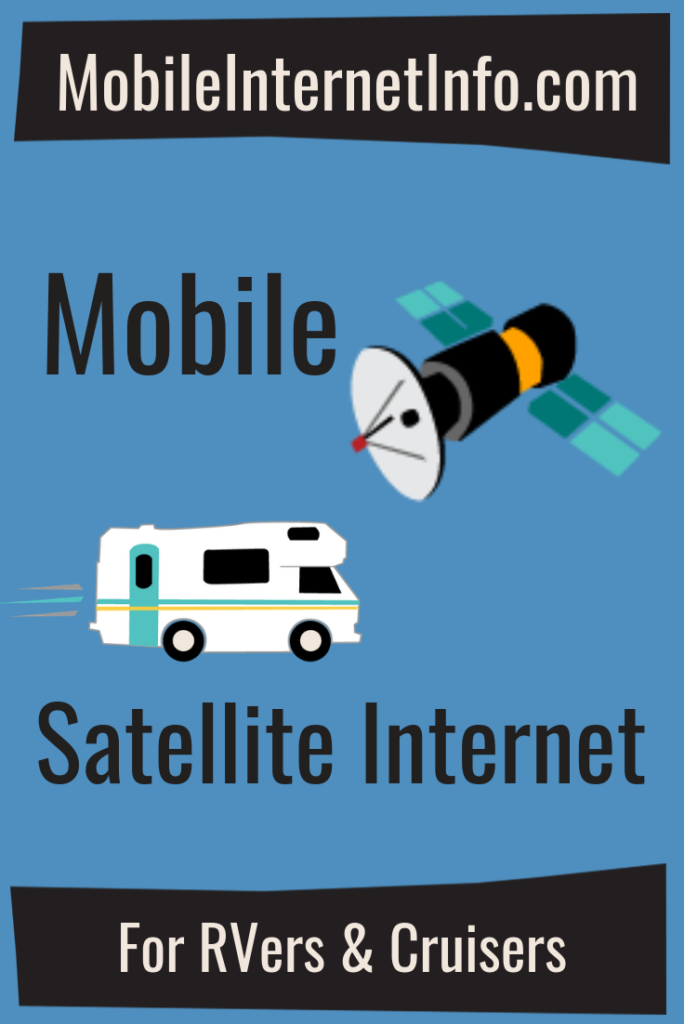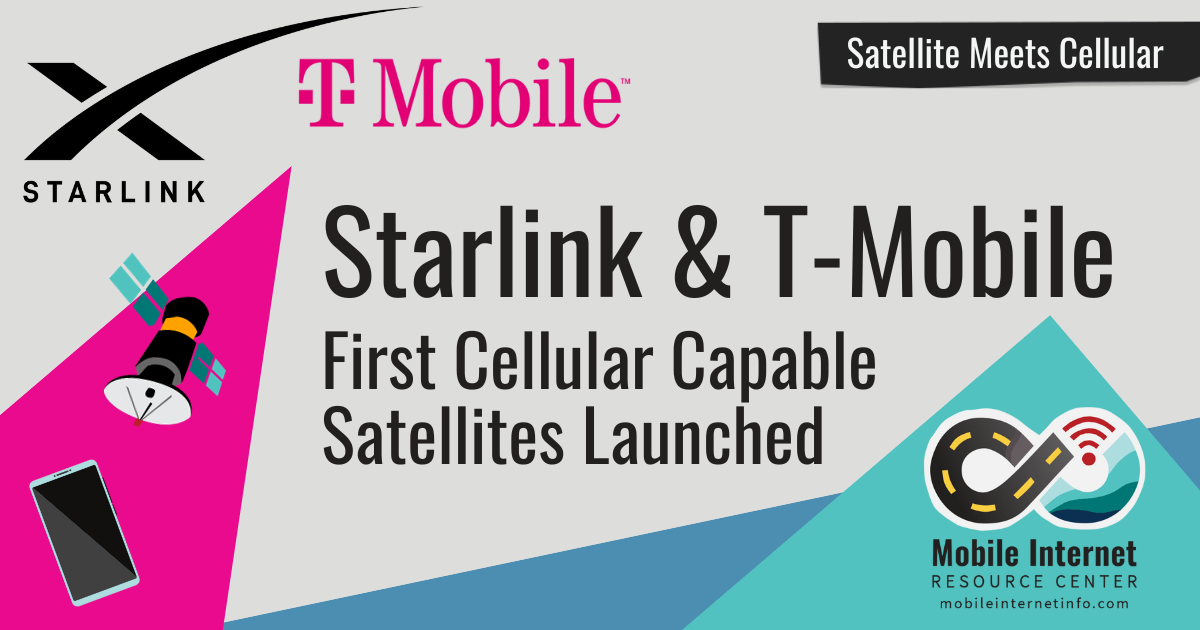Key Points:
- Last night SpaceX launched the first six Starlink satellites that have "Direct to Cell" capabilities, able to communicate with existing 4G cell phones.
- Beta service is expected to come online sometime in 2024, though it will be limited to basic text messaging.
- Voice & Data services are planned in the years ahead, but Direct to Cell Starlink service will be very bandwidth constrained and is not meant to replace or compete with traditional cellular infrastructure.
- Other companies we are tracking that are working on satellite connectivity to conventional cell phones including AST Space Mobile, Lynk, and Apple.
SpaceX and T-Mobile have announced that last night's Starlink launch featured the first six satellites that are capable of Direct to Cell service.
These Starlink satellites feature an additional payload that is capable of communicating directly with existing 4G/LTE cellular handsets - with a goal of eliminating cellular dead zones in remote areas.
SpaceX and T-Mobile first announced this "Coverage Above & Beyond" partnership in Aug 2022, and now 15 months later SpaceX is at last ready to begin testing out and demonstrating this promising new capability.
But before you get too excited - this is NOT Starlink broadband beamed from space into your pocket!
Table of Contents
Starlink T-Mobile Video
Starlink Direct to Cell
SpaceX describes the new Direct to Cell satellites like this:
This launch included the first six Starlink satellites with Direct to Cell capabilities that enable mobile network operators around the world to provide seamless global access to texting, calling, and browsing wherever you may be on land, lakes, or coastal waters without changing hardware or firmware. The enhanced Starlink satellites have an advanced modem that acts as a cellphone tower in space, eliminating deadzones with network integration similar to a standard roaming partner.
But while this new technology is very exciting, one of the most important limitations to understand is this is a secondary cellular payload piggybacking on top of normal Starlink satellites, and the cellular signal is extremely limited in bandwidth compared to the Starlink broadband service.
This is not meant to be Starlink broadband service for cell phones!
In fact, when this technology first comes online - it's only going to support basic text messaging services.

Even Elon Musk was quick to post on X to manage expectations about what Direct to Cell will be capable of:
"Note, this only supports ~7Mb per beam and the beams are very big, so while this is a great solution for locations with no cellular connectivity, it is not meaningfully competitive with existing terrestrial cellular networks."
The primary early uses of Direct to Cell will be in enabling T-Mobile customers to text friends or family members from the middle of nowhere, or for allowing people to contact emergency services when they don't have cellular connectivity.
This is more of a competitor to satellite messengers than a replacement for normal cellular service.
But the great thing is that this messaging service will be available on the cell phone you are already own - without needing a separate device.
When Will This Be Available to Consumers?
SpaceX currently only has an FCC license to conduct limited testing to prove that its Direct to Cell service can work without causing interference.
SpaceX's FCC testing license allows for testing to run through June 2024, and is limited to 840 Direct to Cell satellites communicating with just 2,000 test devices located in 25 pre-designated ground locations.
It will take a while for this first batch of satellites to be launched and to reach their final orbit for testing to begin, and longer still for SpaceX to prove to the FCC that the satellites work as intended in order to have the test license converted to allow for commercial service.
Once the all clear is given - SpaceX will likely spend the rest of the year launching many more Direct to Cell capable Starlink satellites so that they have enough in orbit to provide 24/7 coverage over their initial target markets.
Texting service will roll out (likely in a beta fashion) first - likely late in 2024.

Starlink's direct to cell website forecasts that texting service will start in 2024, followed by voice & data in 2025 once more satellites are launched.
The great thing about this technology is it will work on existing LTE phones without the need to purchase special hardware. So once the technology goes live, your existing phone will be able to connect and communicate with the direct to cell satellites - assuming you have a clear view of the sky.
In addition to T-Mobile, SpaceX has announced these other carrier partners around the globe:
"Global cellular providers using Direct to Cell to gain reciprocal access in all partner nations include T-Mobile in the U.S., Rogers in Canada, KDDI in Japan, Optus in Australia, One NZ in New Zealand, Salt in Switzerland, and Entel in Chile and Peru."
Beyond SpaceX and T-Mobile, there are other companies are also working on Direct to Cell satellite capabilities. In particular - AT&T has done live technology demonstrations with AST Space Mobile, Lynk has demonstrated text messaging capability, and Apple is already live with emergency service messaging to all iPhone 14 and iPhone 15 models.
This is an exciting time for cellular satellite connectivity - expect more ongoing coverage of this emerging technology here at the Mobile Internet Resource Center in the future.
Further Reading
- Starlink Satellite Internet For Mobile RV And Boat Use - Our new featured guide focused on taking advantage of SpaceX's Starlink on the go.
- Mobile Satellite Internet Options -
 Our featured guide on all the current and future satellite internet options of interest to RVers and cruisers.
Our featured guide on all the current and future satellite internet options of interest to RVers and cruisers. - All our our Satellite Internet Resources - Our collection of guides, gear center entries and news coverage on satellite internet.
And here is all of our recent satellite internet coverage:








 Mobile Internet Resource Center (dba Two Steps Beyond LLC) is founded by Chris & Cherie of
Mobile Internet Resource Center (dba Two Steps Beyond LLC) is founded by Chris & Cherie of